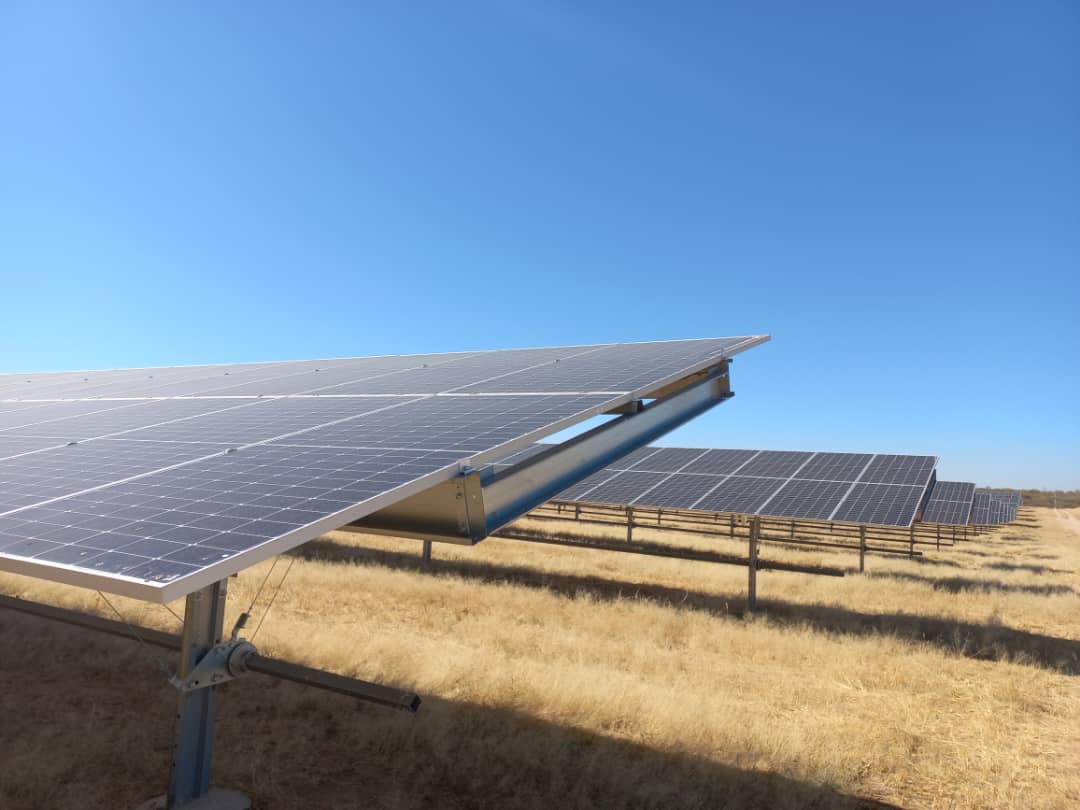More clean power generation
Omburu to bring battery storage online
Government demonstrates commitment to renewable energy
NamPower on 27 June inaugurated the 20 megawatts (MW) Omburu solar power plant just outside Omaruru, built at a cost of over N$300 million. At the event, NamPower’s managing director Kahenge Haulofu also announced that a 58 MW battery storage system (BESS) will be built at the adjacent Omburu substation. The power storage system will be the first of its kind in Namibia and the subcontinent, he said.
"To offer innovative power solutions, in a market that is constantly evolving, the Omburu power station was built to accommodate power storage in a battery system. Last year, Namibia and Germany, through the KfW Development Bank, made a donation of €20 million (about N$334 million) available for the implementation of the first large-scale BESS in Namibia and Southern Africa," he said.
Omburu's inauguration, as the first renewable power plant that NamPower fully owns and operates, is proof of the state-owned enterprise's commitment to become the leading power supplier in the Southern African Development Community (SADC), Haulofu said.
All Namibian
The Omburu plant covers 42 hectares within 300 hectares donated by the Omaruru town council, with 58 104 solar panels and 5 5MW converter stations. The panels are mounted on 183 single-axis railways, following the movement of the sun from east to west.
"I am proud to say that the workforce involved in the project were all Namibians, including the design consultants, subcontractors and the workers," he said. Haulofu said the contractor, a joint venture between HopSol Africa and Tulive Private Equity, delivered the project within budget.
The joint venture agreed on 17 December 2020 to complete the plant's engineering, procurement and construction work at a cost of N$317 million. With the approval of the Electricity Control Board (ECB) on 19 February 2021, NamPower was able to use money from the fund for over-recovery of expenses to finance its expected budget of N$420 million.
Deputy mines and energy minister, Kornelia Shilunga, said government is committed to expanding local power generation capacity from 624MW to 879MW by 2025, using 50MW of independent power projects and the additional 220MW that NamPower will generate by 2025. "This includes providing power to 213 new schools and health facilities, while 600 rural and 13 000 urban homes will receive power," she said.
NamPower is also building a 40MW wind turbine farm and is currently evaluating bidders, hoping to award a contract in early 2023, Haulofu said. The project to generate 40MW through the use of biomass is also in a bidding stage, which is expected to be completed in August. "We hope to award the contract in the first quarter of 2023," Haulofu underlined.
"The 50MW power station, known as Anixas II Power Station, is now in the construction phase and construction is expected to be completed by December 2023," he added.
Mine Power
In thier research paper on, ‘Dependable and cost effective energy for Namibian mines,” from last year the Chamber of Mines of Namibia said, “we are aware of several mining enterprises finding it impossible to kick-start, remain operational or become profitable due to the high input cost of energy and fuel. Of grave concern to our Chamber members is the lack of a competitive energy supply strategy for Namibia, its continued reliance on energy imports from South Africa, and the uncoordinated introduction of renewable energy, raising significant economic risks.” Since then Namibia has reduced its reliance on South African power to imports from 200MW to 100MW while increasing imports from Zambia to 180MW. National power monopoly Nampower also reinvigourated its renewable energy feed-in tarrif (REFIT) program, enabling more solar and wind generation projects like Rosh Pinah Zinc and Lead’s planned 5.4MW solar plant and Orano’s plan to equip ist Erongo desalination plant with 5WM of clean solar power. Another mine with their own renewable energy supply is B2Gold’s 7MW solar plant at its Otjikoto gold mine. Government plans huge renewable generation investments to support its bid to become a leading supplyer of green hydrogen to the world.
[email protected]






